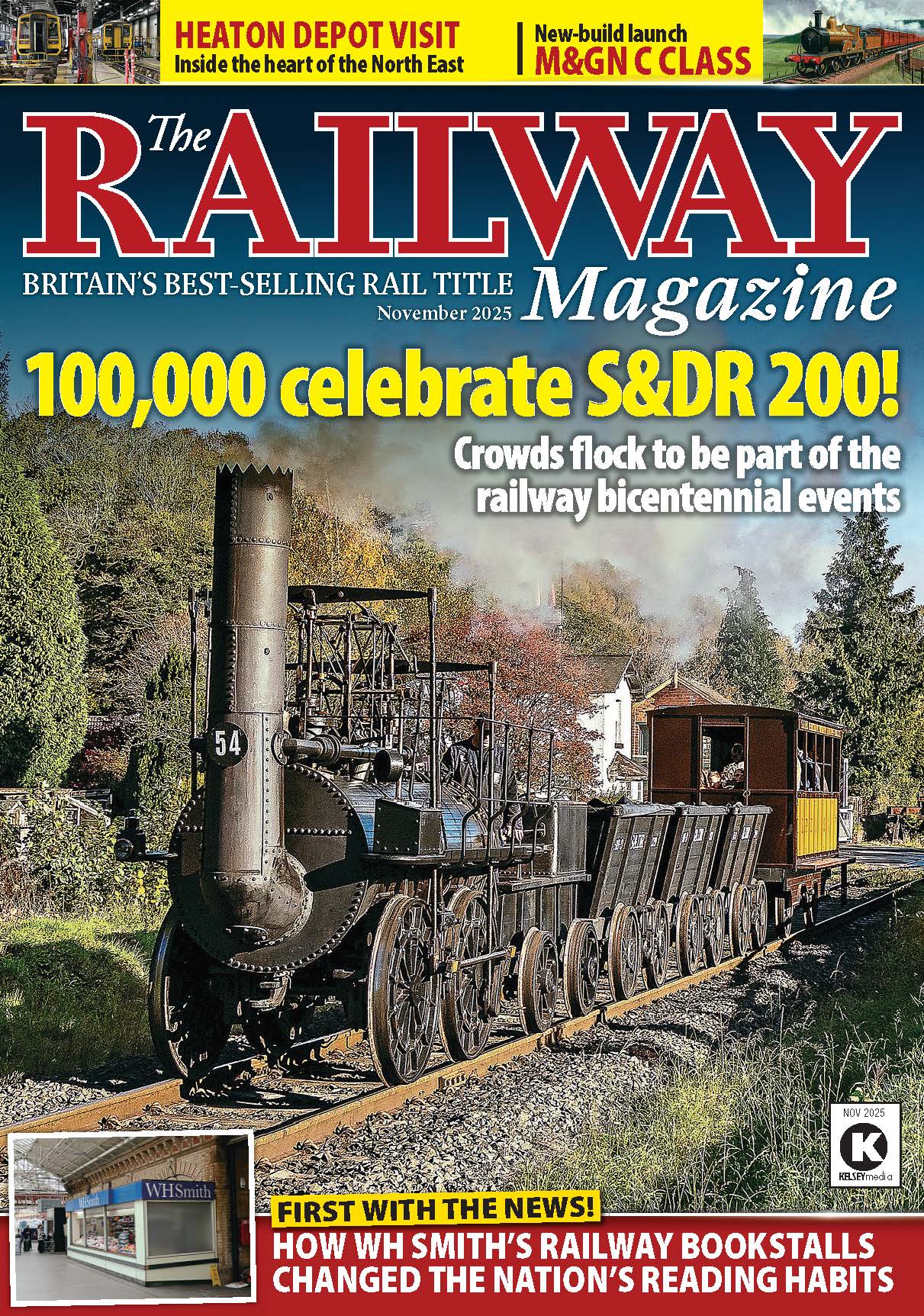The first steam locomotive travelled at 2 miles per hour; a century later, they were hitting 100. Steam locomotives shaped Britain’s industrial, social, and engineering legacy. Here’s a journey through the key engines that made railway history.
1. The Penydarren Locomotive (1803)

The first railway journey in the world took place in February 1804 and ran for 9 miles from Penydarren to Abercynon.
Richard Trevithick was the engineer behind the locomotive. Already a pioneer of steam-powered vehicles on the road, Trevithick built a high-pressure steam engine to drive a hammer at the Penydarren Ironworks in 1802. Trevithick then mounted the engine with wheels and turned it into a locomotive.
From the history of steam through to 21st century rail transport news, we have titles that cater for all rail enthusiasts. Covering diesels, modelling, steam and modern railways, check out our range of magazines and fantastic subscription offers.
The proprietor of the ironworks, Samuel Homfray, made a bet with a more skeptical ironmaster that Trevithick’s locomotive could haul 10 tons of iron along the Merthyr Tramroad. On 21 February 1804, Homfray won his bet. The locomotive hauled 10 tons of iron, five wagons and 70 men. The journey took 4 hours and 5 minutes at an average speed of around 2.4 mph.
Could those present that day have even imagined what was to come in the following decades?
2. Puffing Billy (1813–1814)

Built between 1813 and 1814 by William Hedley, Jonathan Forster & Timothy Hackworth for hauling coal wagons at Wylam Colliery, Northumberland, Puffing Billy is the world’s oldest surviving steam locomotive. It was built alongside two similar engines and its sister locomotive, Wylam Dilly, is the second oldest surviving railway locomotive.
Puffing Billy introduced design principles such as the use of a multi-flanged wheel and cylinder placement that influenced every locomotive after it.
The locomotive remained in service until 1862, when it was lent (and later sold to) what is now the Science Museum in London, where it remains to this day.
3. Locomotion No. 1 (1825)

As the first locomotive to haul a passenger train on a public railway, Locomotion No. 1 changed the game.
Built in 1825 by George & Robert Stephenson, in September of that year it hauled the first train on the Stockton and Darlington Railway.
From there, locomotive design advanced quickly. Locomotion No. 1 quickly became obsolete, but it’s legacy is undeniable. The year long celebration of Railway 200 has all been in recognition of what began on that day in September 1825.
In September 2025, visitors saw a replica of Locomotion No. 1 carry out the same journey. As for the original, it is preserved at Locomotion in Shildon but made it to the Greatest Gathering in Derby during August of its bicentenary.
4. The Rocket (1829)
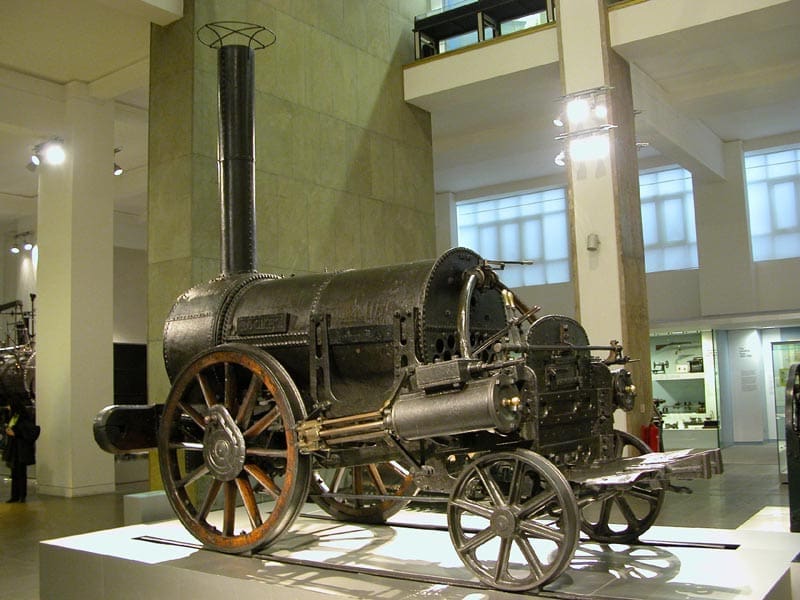
Robert Stephenson went on to build Rocket for the Rainhill Trials, a competition set up by the nearly-completed Liverpool & Manchester Railway to prove their railway could reliably be operated by steam locomotives rather than stationary steam engines hauling trains along the rail using cables as had been originally intended. The winner would receive a prize of £500. The competition was held in October of 1829, with the locomotives subject to various trails and demonstrations. Rocket won; it wasn’t even close.
Rocket revolutionised locomotive design with its multitube boiler, separate firebox, and blastpipe, principles that defined steam engines for a century.
It was in operation on the Liverpool and Manchester Railway from its opening ceremony in 1830 until 1834. It was then used between 1836 and 1840 on Lord Carlisle’s Railway near Brampton.
The original has been exhibited at the Locomotion Museum in Shildon since 2023.
5. Iron Duke class (1847)
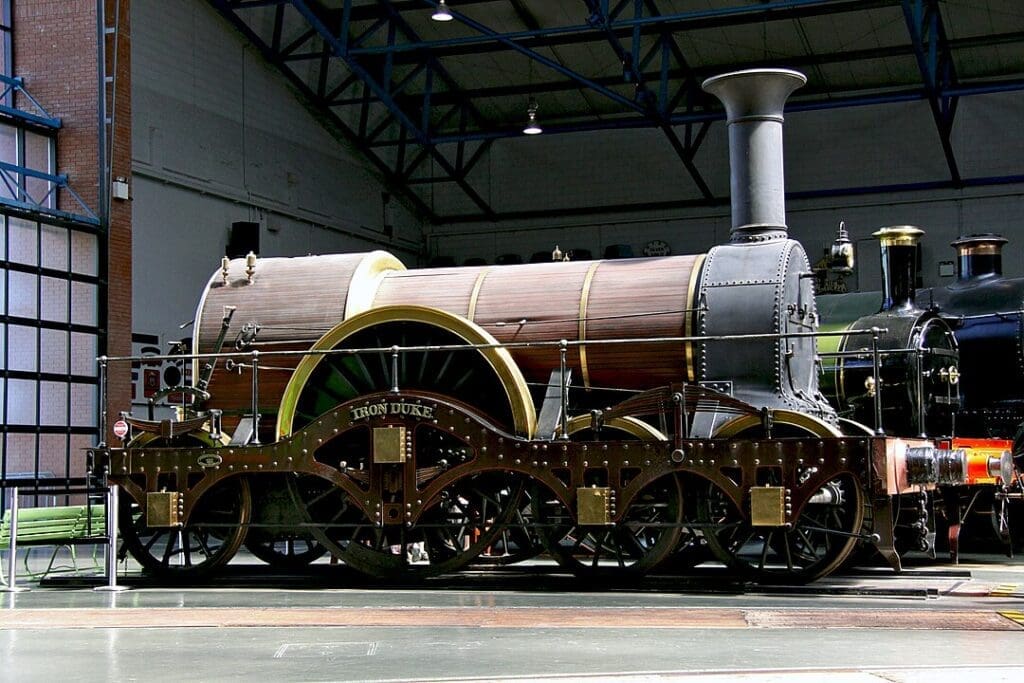
Built by Great Western Railway, locomotives of the Iron Duke class were remarkably fast for their day. In May 1848, a member of this class, Great Britain, achieved a speed of 78.2 mph.
Rail travel was speeding up.
6. City of Truro (1903)
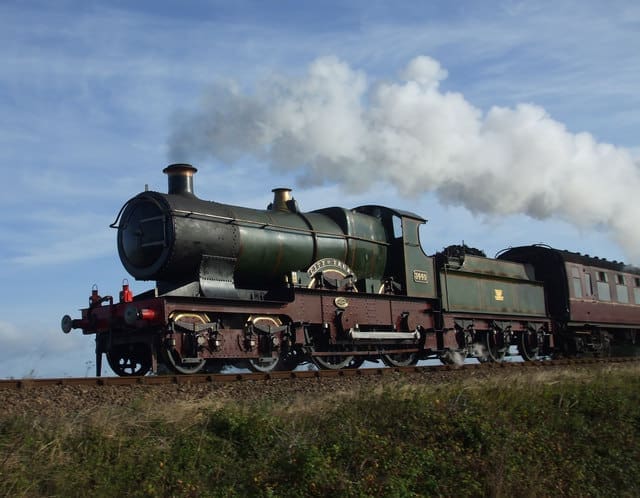
From fast to faster – City of Truro was claimed to be the first steam locomotive to reach 100 mph.
GWR 3700 Class 3440 City of Truro was built in 1903 for the Great Western Railway as part of a batch of ten locomotives in the GWR 3700 Class, each of which was named after a city on the GWR system.
There is some debate over its speed record due to a few inconsistencies in the recorded numbers and an unconfirmed claim that a locomotive in the US achieved a run of over 100 mph 10 years earlier. Either way, it’s clear that railway speed and engineering were progressing rapidly.
The locomotive remained in everyday service until 1931. It is currently held in the Swindon Steam Railway Museum.
7. Flying Scotsman (1923)
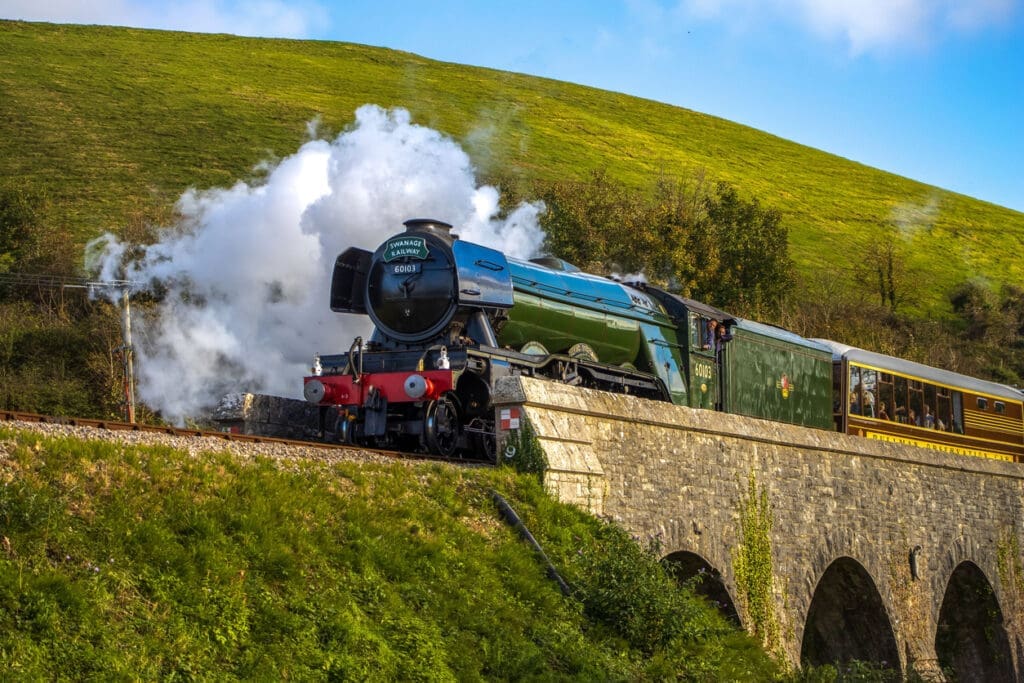
Arguably the most famous locomotive in the world, Flying Scotsman was designed by Sir Nigel Gresley and built in 1923 for LNER.
It was used for long-distance express passenger travel on the East Coast Main Line and made the first non-stop run from London to Edinburgh, completing the journey in 8 hours and 3 minutes.
It also made City of Truro‘s record official when it became the first locomotive to reach the officially authenticated speed of 100 mph in 1934. As if it wasn’t already impressive enough, while on tour in Australia in 1989 it set the record for the longest non-stop run of a steam locomotive at 422 miles.
In 2023, Flying Scotsman celebrated its centenary with a packed year of events up and down the country. It is currently based at the National Railway Museum in York.
8. Mallard (1938)

Mallard claimed the world speed record for a steam locomotive in 1938, achieving 126 mph. It still holds the record to this day.
Sir Nigel Gresley’s design is sleek and aerodynamic, allowing Mallard to haul long-distance express passenger services at high speeds.
It is currently part of the collection on display at the National Railway Museum in York.
9. Evening Star (1960)
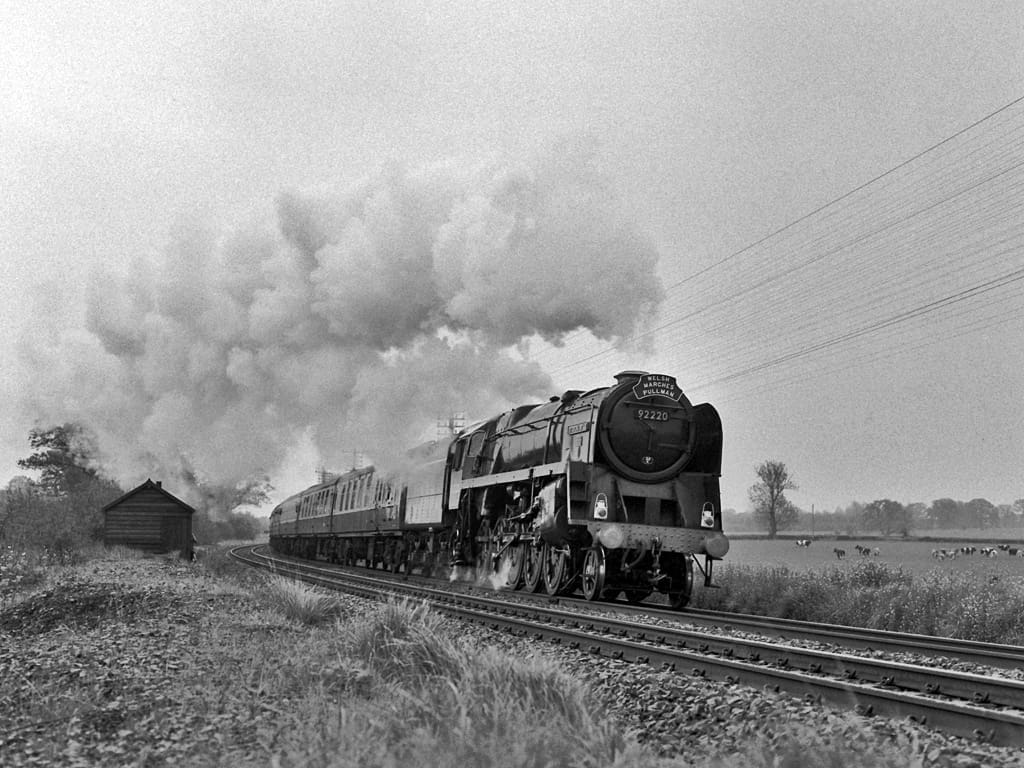
The end of an era arrived in 1960 with Evening Star, the last steam locomotive built by British Railways before diesel and electric power took over.
It was the only locomotive already marked for preservation during its construction. A competition was held to choose its name.
At the naming ceremony in March of 1960, Chairman of the Western Area Baord of British Transport Commission R.F. Hanks said “I am sure it has been truly said that no other product of man’s mind has ever exercised such a compelling hold upon the public’s imagination as the steam locomotive. No other machine, in its day, has been a more faithful friend to mankind and has contributed more to the cause of industrial prosperity in this, the land of its birth, and throughout the world.”
Evening Star is currently at the National Railway Museum.
10. Tornado (2008)
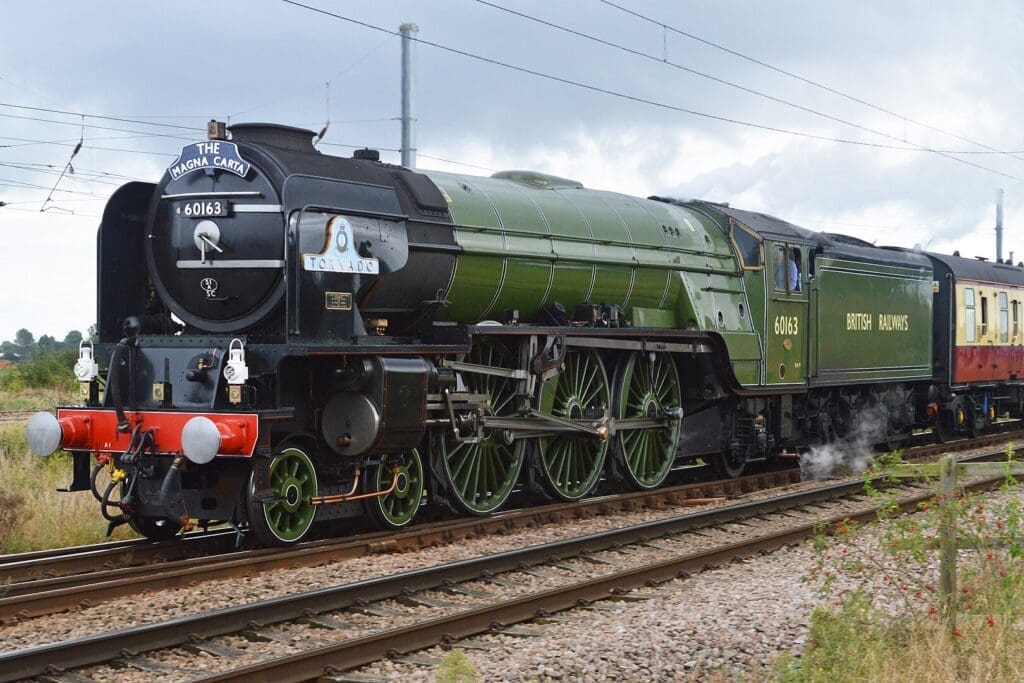
Evening Star was not the end after all. In 2008, a newly built Peppercorn A1 Pacific, Tornado, became the first new mainline steam engine in Britain for almost 50 years.
The A1 Steam Locomotive Trust launched the project in 1990 and construction began in 1994. It was tested on the railway in 2008 and granted a mainline running certificate in 2009. It still regularly works heritage and mainline trains.
The success of the project led the A1 Steam Locomotive Trust to launch a new build project of the long-lost P2 class 2-8-2 “Mikado” type designed by Sir Nigel Gresley in the 1930s. The locomotive is currently being built at Darlington Locomotive Works. Steam is far from dead!
